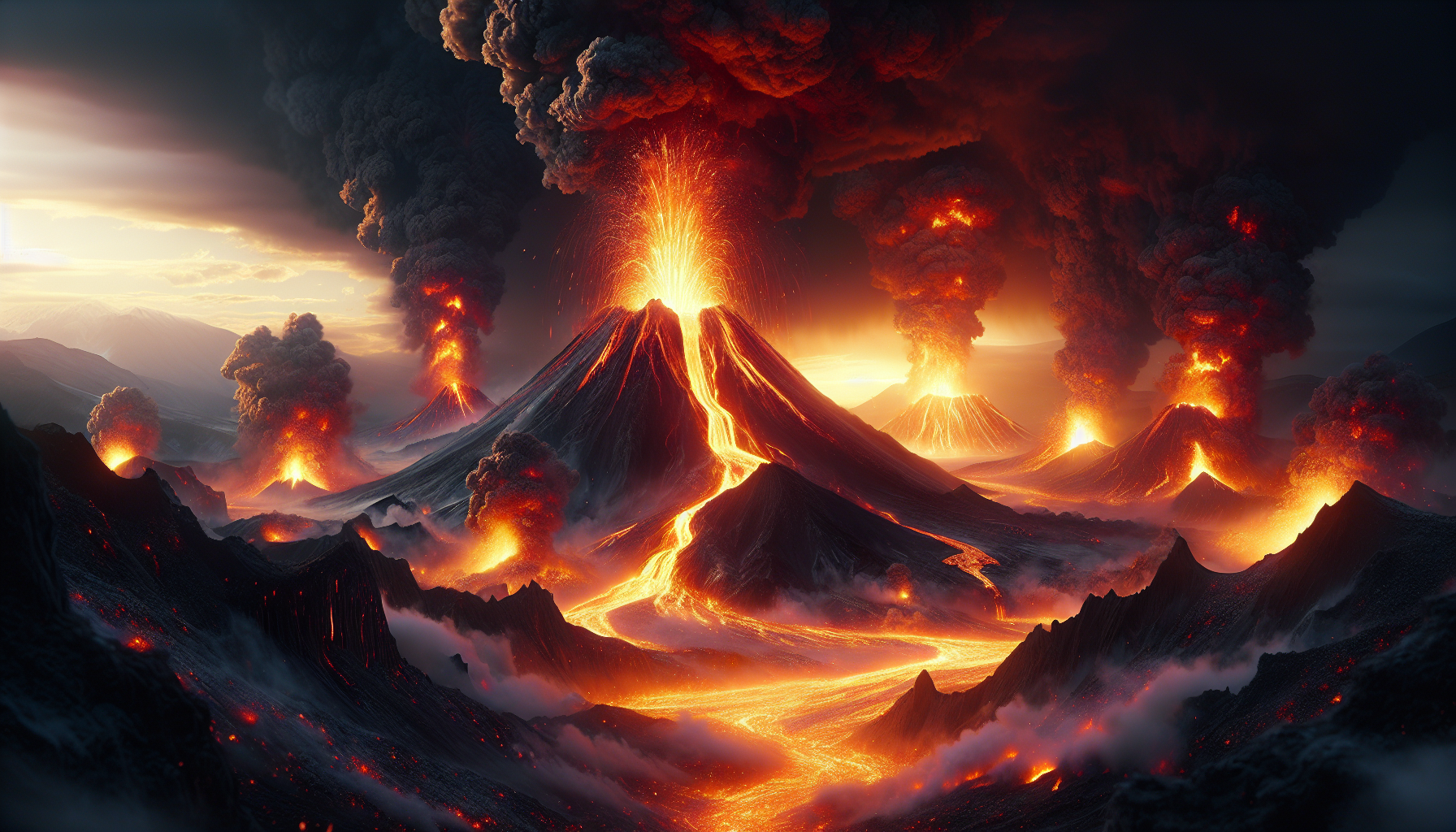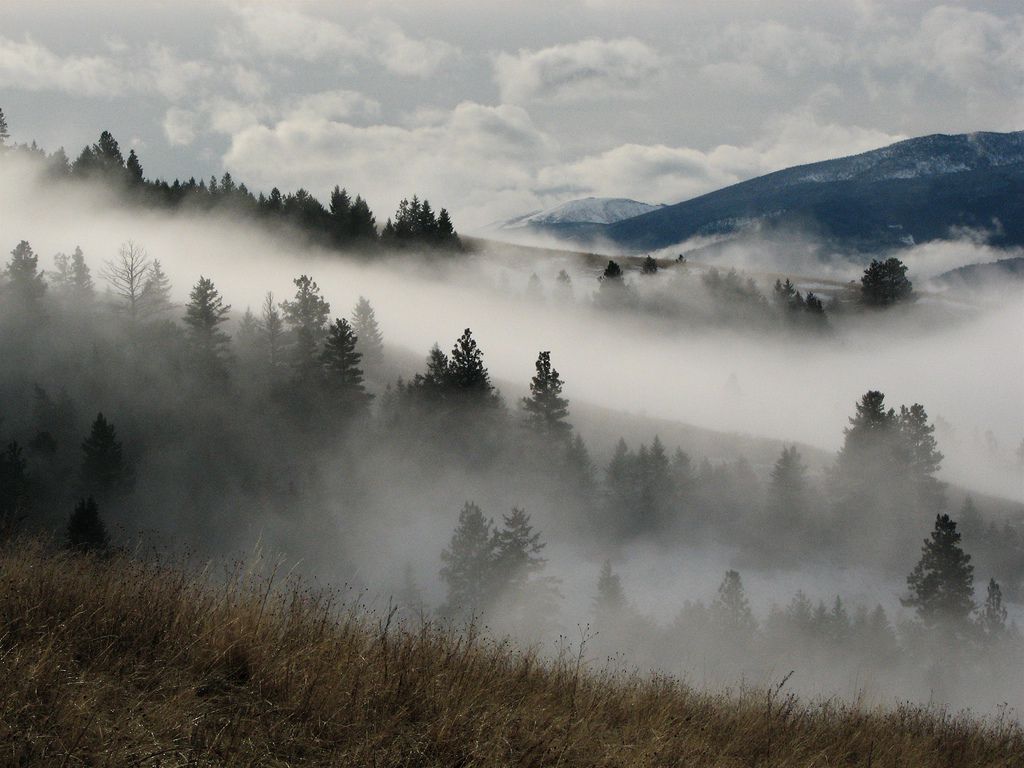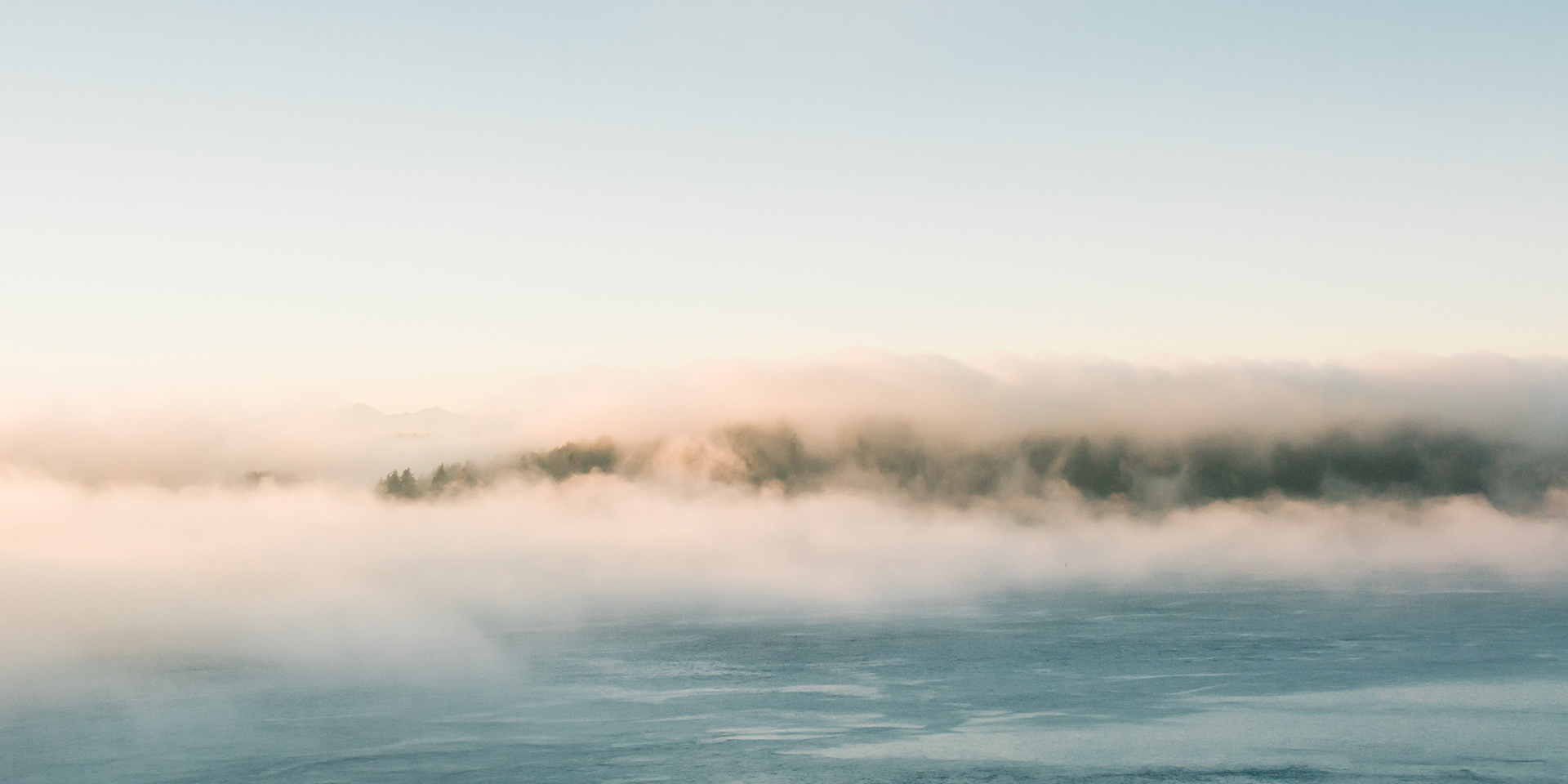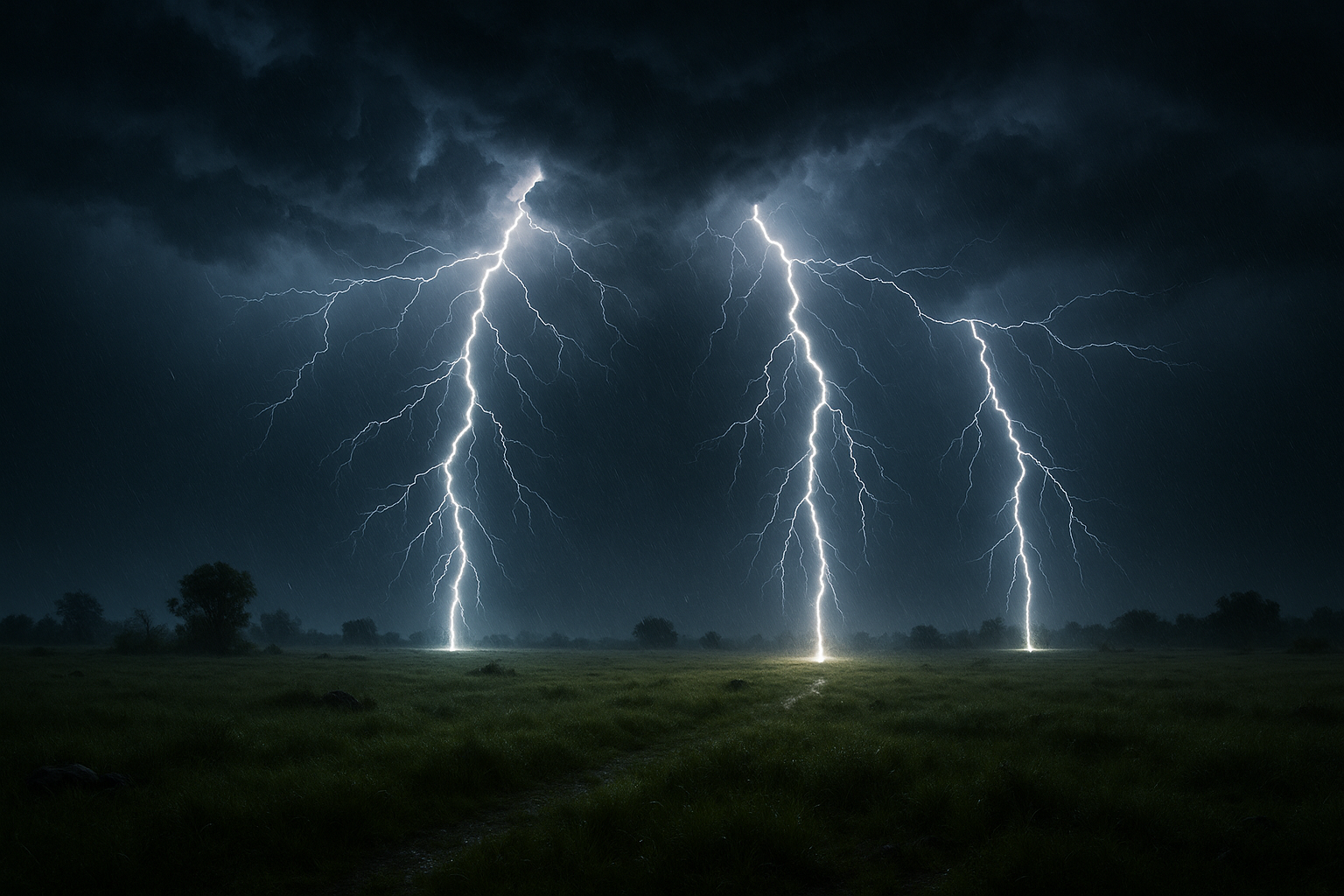In the heart of our ever-evolving planet, where land meets sky in a dramatic dance of fire and ash, lies a world seldom seen by the human eye. This world, sculpted by the raw power of nature, is home to one of the Earth’s most awe-inspiring and fearsome phenomena: volcanoes. These magnificent mountains of molten rock and steam are not just geological formations but are dynamic, living entities that tell the story of our planet’s fiery origins. Capturing their intense beauty and volatile nature is no small feat, yet it is precisely this challenge that drives a new generation of photographers and scientists alike to brave the heat and danger. Armed with cutting-edge technology and an insatiable curiosity, they are uncovering the hidden wonders of volcanic activity, revealing the unseen with a rare lens that brings these fiery giants into sharp focus.
Volcanoes have long captured the human imagination, from the mythological tales of gods dwelling within their fiery craters to the scientific quests that seek to unlock their mysteries. However, for many of us, they remain distant, abstract concepts, confined to textbook diagrams or fleeting news headlines. The truth is, these natural wonders are as dynamic as they are destructive, offering glimpses into the powerful processes that shape our planet. With recent advancements in photography and imaging technology, we are now able to witness volcanoes in a way never before possible. High-resolution cameras and drones have become invaluable tools in this pursuit, allowing us to explore every fissure, every eruption, and every pyroclastic flow with unprecedented clarity and precision.
This article delves into the captivating world of volcano photography, exploring the innovative techniques and technologies that are revolutionizing how we perceive these geological marvels. We will journey into the field with intrepid photographers and volcanologists who risk their lives to bring back images that are as breathtaking as they are scientifically valuable. From the sweltering landscapes of Hawaii’s Kilauea to the icy terrains surrounding Iceland’s Eyjafjallajökull, these experts are on a mission to document the primal forces that continue to shape our world. Through their lens, we gain not only a deeper appreciation of the beauty and power of volcanoes but also a greater understanding of the environmental and geological processes at work.
But why go to such lengths to capture these fiery titans on film? For many, the allure lies not only in the aesthetic appeal but also in the critical insights these images provide. By studying volcanoes through photography, scientists can better predict eruptions, understand the impact of volcanic ash on climate, and even trace the movement of tectonic plates. The data gathered from these visual studies is invaluable, providing a visual narrative that complements traditional scientific research and helps communicate complex concepts to a broader audience. As you read through this article, you’ll discover how these images serve as a bridge between art and science, enhancing our collective knowledge and inspiring awe in equal measure.
Join us as we embark on this visual and scientific exploration of volcanoes, a journey that promises to ignite your imagination and expand your understanding of one of nature’s most formidable forces. Whether you’re a seasoned geologist, an aspiring photographer, or simply a curious reader, this deep dive into the world of volcano photography will offer fresh perspectives and insights. Through the lens of those who dare to venture close to the edge, we will capture the unseen and celebrate the fiery beauty that lies within. 🌋
The Mystical World of Volcanoes
Volcanoes are one of nature’s most awe-inspiring creations, representing both the destructive and creative forces of the Earth. They emerge when molten rock, or magma, from beneath the Earth’s crust is expelled to the surface, often resulting in magnificent fiery displays. The study of volcanoes offers a glimpse into the internal workings of our planet, revealing secrets that are both fascinating and, at times, terrifying.
With technological advancements, we now have the means to explore these fiery giants like never before. Cameras with rare lenses can capture the unseen beauty of volcanic eruptions, offering insights into the mesmerizing dance of molten rock, ash, and gases. This not only aids in scientific research but also allows the general public to appreciate the splendor of these natural phenomena.
Volcanoes can be classified into several types, each with unique characteristics. From shield volcanoes, like those found in Hawaii, with their gentle slopes and fluid lava flows, to stratovolcanoes, known for their steep profiles and explosive eruptions, each type presents its own set of challenges and wonders. Understanding these differences is crucial for predicting volcanic activity and mitigating potential risks.
The Role of Technology in Volcanic Exploration
In recent years, technology has revolutionized the way we study volcanoes. High-resolution cameras equipped with rare lenses have become invaluable tools for volcanologists. These lenses can capture images and videos in extreme conditions, such as high temperatures and volatile gases, providing detailed visuals that were once impossible to obtain.
One significant breakthrough is the use of thermal imaging cameras. These cameras detect heat emitted by volcanic activity, allowing scientists to monitor changes in temperature and identify areas of increased activity. This information is crucial for predicting eruptions and ensuring the safety of nearby communities.
Another advancement is the use of drones. These unmanned aerial vehicles can fly close to active volcanoes, capturing footage that would be too dangerous for humans to obtain. They provide a bird’s-eye view of eruptions, offering insights into the dynamics of lava flows and ash plumes. Drones also enable the collection of gas samples, which can be analyzed to understand the composition of volcanic emissions.
Understanding Volcanic Eruptions
Volcanic eruptions are complex events, driven by the movement of molten rock beneath the Earth’s surface. To understand these eruptions, scientists study the composition of magma, the structure of the volcano, and the surrounding geology. This research helps predict future eruptions and mitigate their impacts on human populations and the environment.
Magma is a mixture of molten rock, crystals, and dissolved gases. Its composition influences the type of eruption that occurs. For example, magma with high silica content is more viscous, leading to explosive eruptions. In contrast, magma with low silica content is more fluid, resulting in gentle lava flows.
The structure of a volcano also plays a role in its eruptive behavior. The presence of a magma chamber, the size and shape of the volcanic vent, and the surrounding rock formations all influence how magma is expelled during an eruption. By studying these factors, scientists can better predict the timing and nature of volcanic activity.
The Art of Capturing Volcanic Beauty
Photography and videography play a significant role in documenting volcanic activity. With the advent of rare lenses, photographers can capture images that showcase the fiery beauty of eruptions in stunning detail. These images not only serve as valuable research tools but also inspire awe and wonder among viewers.
Photographers often face challenging conditions when capturing volcanic eruptions. They must contend with extreme temperatures, ash clouds, and toxic gases. However, the results are worth the effort, as they provide a unique glimpse into the heart of a volcano. The vibrant colors of molten lava, the billowing clouds of ash, and the dramatic landscapes all contribute to the allure of volcanic photography.
Table: Comparison of Different Volcano Types
| Volcano Type | Characteristics | Examples |
|---|---|---|
| Shield Volcano | Gentle slopes, fluid lava flows | Mauna Loa, Kilauea |
| Stratovolcano | Steep profile, explosive eruptions | Mount St. Helens, Mount Fuji |
| Cinder Cone | Small, steep-sided, built from pyroclastic fragments | Paricutin, Sunset Crater |
For an in-depth look at how these majestic structures are captured, check out the video below titled “The Fiery Beauty of Volcanoes” on the Volcano Watch Channel:
The Importance of Volcanic Research
Research into volcanic activity is crucial for understanding the Earth’s geology and mitigating the impacts of eruptions. Volcanologists study active and dormant volcanoes to identify patterns in volcanic behavior. This research is essential for developing early warning systems that can save lives and protect property.
One area of focus is the study of volcanic gases. These gases, which include water vapor, carbon dioxide, and sulfur dioxide, can provide valuable information about the state of a volcano. Changes in gas emissions can indicate an impending eruption, allowing authorities to issue timely warnings and evacuations.
Another important aspect of volcanic research is the study of historical eruptions. By examining past events, scientists can identify trends and patterns that help predict future activity. This information is used to create hazard maps, which identify areas at risk of lava flows, ash fall, and pyroclastic flows. These maps are essential tools for emergency management and land-use planning.
The Role of Public Awareness and Education
Educating the public about volcanic hazards is a critical component of disaster preparedness. Communities living near active volcanoes need to be aware of the risks and know how to respond in the event of an eruption. Public awareness campaigns and educational programs help disseminate this information, reducing the potential for loss of life and property.
Volcanologists often collaborate with local governments and organizations to develop educational materials and conduct drills. These initiatives teach residents how to recognize warning signs, create emergency plans, and evacuate safely. By fostering a culture of preparedness, communities can better withstand the impacts of volcanic eruptions.
Furthermore, public engagement with volcanic research can inspire interest in science and the natural world. By showcasing the beauty and power of volcanoes, scientists can encourage a sense of wonder and curiosity among people of all ages. This, in turn, can lead to increased support for scientific research and conservation efforts.
- Understanding the different types of volcanoes and their characteristics is crucial for predicting eruptions and ensuring safety.
- Technological advancements, such as thermal imaging cameras and drones, have revolutionized volcanic research.
- Capturing the fiery beauty of volcanoes through photography and videography requires specialized equipment and expertise.
- Volcanic research provides valuable insights into the Earth’s geology and helps mitigate the impacts of eruptions.
- Public awareness and education are essential for disaster preparedness and fostering a culture of safety.

Conclusion
Certainly! Here’s a crafted conclusion for your article on “Capturing the Unseen: Rare Lens Reveals the Fiery Beauty of Volcanoes”:
—
In conclusion, the exploration of volcanoes through advanced photographic lenses unveils not only the mesmerizing beauty hidden within these natural phenomena but also expands our understanding of their dynamic and complex nature. Throughout this article, we delved into the technological advancements in photography that have made it possible to capture the elusive and awe-inspiring aspects of volcanic activity. By highlighting the intricacies of lava flows, ash plumes, and the vibrant palette of molten rock, we see how these lenses act as a bridge between the observable and the hidden, offering a glimpse into the Earth’s fiery heart.
One of the significant points discussed is the role of these lenses in scientific research. They provide invaluable data that help volcanologists predict eruptions and understand the underlying processes driving volcanic activity. This not only enhances our scientific knowledge but also contributes to public safety, allowing for better preparedness and response strategies in the face of volcanic hazards. The photographic documentation of these events serves as a powerful tool for education, raising awareness about the potential dangers while also captivating the public’s imagination.
Moreover, the artistic potential of capturing volcanic activity cannot be understated. Photographers using rare lenses can transform the raw power of a volcanic eruption into breathtaking art, invoking a sense of wonder and respect for nature’s forces. This artistic dimension adds a layer of engagement, encouraging broader audiences to appreciate and value the preservation of natural landscapes.
The significance of this theme extends beyond scientific and artistic realms; it underscores a deeper connection between humanity and the Earth. As we gaze upon these vivid images, we’re reminded of our planet’s incredible power and beauty, and our responsibility to protect and preserve it. The interplay of molten rock and dynamic landscapes prompts us to reflect on our place within this world, fostering a sense of stewardship and urgency to address environmental challenges.
We invite you, our readers, to take these insights and apply them in your own lives. Whether you’re inspired to learn more about volcanic activity, engage in environmental conservation efforts, or simply share the beauty of these images with others, your actions can make a difference. Let’s continue to explore and appreciate the wonders of our planet, ensuring that future generations can experience the same awe and inspiration.
Please feel free to share your thoughts in the comments below. Your perspective is valuable, and we encourage you to contribute to the ongoing conversation about the impact and significance of capturing these unseen wonders. Don’t forget to share this article with others who might be fascinated by the fiery beauty of volcanoes. Together, we can foster a greater appreciation for the marvels of our natural world.
For those interested in exploring more about the technological advancements in photography and their applications in volcanology, check out these resources: Link 1 and Link 2. These links provide deeper insights into the cutting-edge techniques and their implications for both science and art.
In closing, capturing the unseen aspects of volcanoes through rare lenses is more than just an artistic endeavor; it’s a testament to human curiosity and ingenuity. It’s a celebration of our ability to uncover the hidden, to transform danger into beauty, and to find inspiration in the unpredictable forces of nature. 🌋✨ Let’s embrace the fiery beauty of our planet and continue exploring the wonders it holds.
—
(Note: Replace placeholder links with actual, active URLs that fit the context and theme of your article.)
Toni Santos is a visual storyteller and artisan whose creations celebrate the poetry of the natural world. Through his thoughtful artistic lens, Toni captures the elegance of botanical forms, transforming them into meaningful expressions of symbolism, resilience, and timeless beauty.
His journey is deeply rooted in a passion for flora and the mysteries they carry. From the shape of a petal to the curve of a vine, each design Toni brings to life reflects a deeper narrative — one of growth, transformation, and harmony with nature. Whether crafting symbolic floral jewelry, enchanted botanical illustrations, or seasonal visual studies, Toni’s work evokes the quiet magic found in Earth’s most delicate details.
With a background in handcrafted artistry and visual design, Toni blends technique with intention. His creations do more than decorate — they speak, often inspired by ancient meanings behind flowers, the cycles of the seasons, and the invisible bonds between nature and spirit.
As the creative voice behind Vizovex, Toni shares this botanical journey with the world, offering curated stories, handcrafted collections, and thoughtful articles that help others reconnect with nature’s symbolism and artistic essence.
His work is a tribute to:
The quiet power of flowers and their messages
The art of visual symbolism in everyday life
The beauty of slowing down to see what’s hidden in plain sight
Whether you’re an artist, a nature lover, or someone drawn to the deeper meanings behind the natural world, Toni welcomes you to explore a space where aesthetics meet soul — one petal, one story, one creation at a time.





